Related Research Articles

William Walker was an American physician, lawyer, journalist, and mercenary who organized several private military expeditions into Mexico and Central America with the intention of establishing English-speaking colonies under his personal control, an enterprise then known as "filibustering". Walker usurped the presidency of Nicaragua in July 1856 and ruled until May 1, 1857, when he was forced out of the presidency and the country by a coalition of Central American armies. He returned in an attempt to re-establish his control of the region and was captured and executed by the government of Honduras in 1860.

Quercus fusiformis, commonly known as escarpment live oak, plateau live oak, plateau oak, or Texas live oak, is an evergreen or nearly evergreen tree. Its native range includes the Quartz Mountains and Wichita Mountains in southwestern Oklahoma, through Texas, to the Mexican states of Coahuila, Tamaulipas, and Nuevo León.
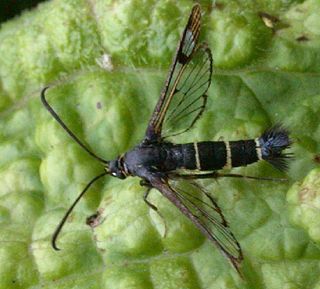
The Sesiidae or clearwing moths are a diurnal moth family in the order Lepidoptera known for their Batesian mimicry in both appearance and behaviour of various Hymenoptera.

The Hepialidae are a family of insects in the lepidopteran order. Moths of this family are often referred to as swift moths or ghost moths.
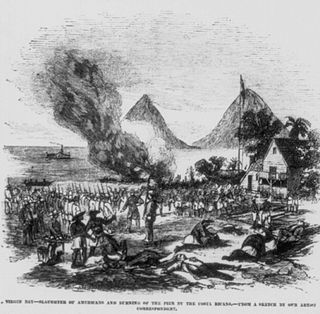
The Filibuster War or Walker affair was a military conflict between filibustering multinational troops stationed in Nicaragua and a coalition of Central American armies. An American, William Walker, briefly invaded Nicaragua in 1855 with a small army. He seized control of the country by 1856, but was ousted the following year.

Pyrocystis fusiformis is a non-motile, tropical, epipelagic, marine dinoflagellate, reaching lengths of up to 1 mm. P. furisormis display bioluminescence when disturbed or agitated. In coastal marine waters, this dinoflagellate causes glowing effects after dark. P. fusiformis was first described in the Proceedings of the Royal Society of London in 1876.
Hyaleucerea is a genus of moths in the subfamily Arctiinae. The genus was erected by Arthur Gardiner Butler in 1875.
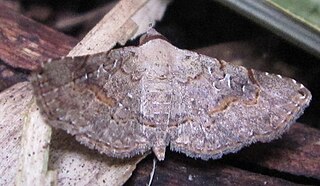
Rhesala is a genus of moths of the family Erebidae. The genus was erected by Francis Walker in 1858.

Pseudocolus fusiformis is a stinkhorn mushroom in the Phallaceae, a family well known for a remarkable range of fruit body types. It is the most widely distributed member of the genus Pseudocolus and has been found in the United States, Australia, Japan, Java, and the Philippines. It is commonly known as the stinky squid, because of its fetid odor, and its three or four upright "arms" which are connected at the top. The malodorous smell comes from the dark greenish slimy gleba covering the inside faces of the arms, and attracts insects that help to disperse the spores.
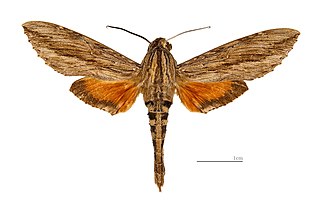
Dilophonotini is a tribe of moths of the family Sphingidae described by Hermann Burmeister in 1878.
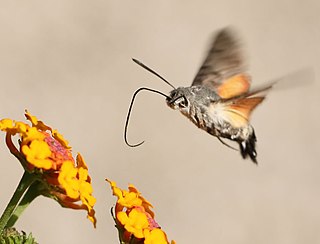
Macroglossini is a tribe of moths of the family Sphingidae described by Thaddeus William Harris in 1839.

Pheosia is a genus of moths of the family Notodontidae.
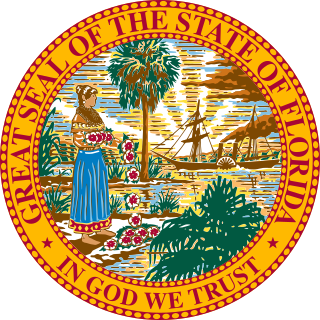
The 1856 United States House of Representatives election in Florida was held on Monday, October 6, 1856 to elect the single United States Representative from the state of Florida, one from the state's single at-large congressional district, to represent Florida in the 35th Congress. The election coincided with the elections of other offices, including the presidential election, the senatorial election, the gubernatorial election, and various state and local elections.
Karl Heider was an Austrian zoologist and embryologist known for his research involving the developmental history of invertebrates. He was the son of Moriz Heider, a pioneer of scientific dentistry in Austria.
Hyaleucerea erythrotelus is a moth of the subfamily Arctiinae. It was described by Francis Walker in 1854. It is found in Pará, Brazil.
Hyaleucerea gigantea is a moth of the subfamily Arctiinae. It was described by Herbert Druce in 1884. It is found in Guatemala and Panama.
Hyaleucerea panacea is a moth of the subfamily Arctiinae. It was described by Druce in 1884. It is found in Costa Rica.
The Euchromiina are a subtribe of tiger moths in the family Erebidae. It was described by Arthur Gardiner Butler in 1876. Many species in the subtribe are mimics of wasps.

Orchesia is a genus of false darkling beetles in the family Melandryidae. There are about 19 described species in Orchesia.

Carystoterpa is a genus of spittlebug of the family Aphrophoridae.
References
- ↑ Savela, Markku. "Hyaleucerea fusiformis (Walker, 1856)". Lepidoptera and Some Other Life Forms. Retrieved February 6, 2018.
| This Euchromiina-related article is a stub. You can help Wikipedia by expanding it. |